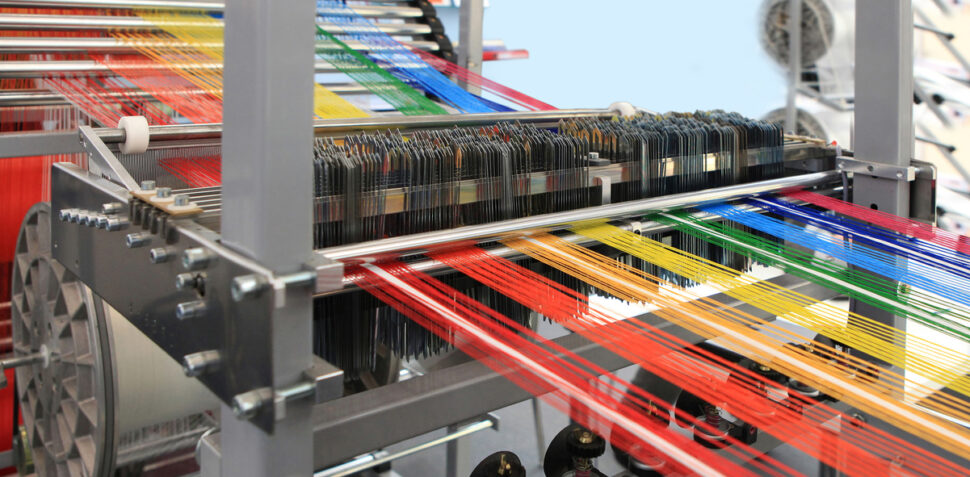After more than forty years of import quotas, the textile and clothing sector will become subject to the general rules of the General Agreement on Tariffs and Trade from 1 January, 2005. Liberalization has been controversial because both textiles and clothing contribute to employment in developed countries, particularly in regions where alternative jobs may be difficult to find. In the European Union, for example, the sector is dominated by small and medium-sized enterprises concentrated in a number of regions that are highly dependent on this sector (Commission of the European Communities, 2003). Textiles and clothing are also among the sectors where developing countries have the most to gain from multilateral trade liberalization. In fact, the prospect of liberalization of the textiles and clothing sectors was one of the reasons why developing countries accepted to include services and intellectual property rights – areas to which they were sceptical at the outset – in the Uruguay Round (Reinert, 2000). The objective of this paper is to assess the likely impact of liberalization, taking into account recent technological and managerial developments in the sector, and focusing on recent developments in supply chain management in the clothing and textiles sectors. The clothing industry is labour-intensive and it offers entry-level jobs for unskilled labour in developed as well as developing countries. Job creation in the sector has been particularly strong for women in poor countries, who previously had no income opportunities other than the household or the informal sector.2 Moreover, it is a sector where relatively modern technology can be adopted even in poor countries at relatively low investment costs. These technological features of the industry have made it suitable as the first rung on the industrialization ladder in poor countries, some of which have experienced a very high output growth rate in the sector (e.g. Bangladesh, Sri Lanka, Viet Nam and Mauritius).3 These characteristics, however, have also made it a footloose industry 2 See Nordås (2003a) for a discussion. 3 The textile and clothing sector has also grown very fast in more developed countries that have entered into preferential agreements with the EU or the US or both (e.g. Bulgaria, Lithuania, Macedonia and Jordan). that is able to adjust to changing market conditions quickly. At the same time, the textile and clothing industry has high-value added segments where design, research and development (R&D) are important competitive factors. The high end of the fashion industry uses human capital intensively in design and marketing. The same applies to market segments such as sportswear where both design and material technology are important. Finally, R&D is important in industrial textiles where, again, material technology is an important competitive factor. Textiles and clothing are closely related both technologically and in terms of trade policy. Textiles provide the major input to the clothing industry, creating vertical linkages between the two. International trade in the two sectors is regulated by the Agreement on Textiles and Clothing (ATC) at the multilateral level, while bilateral and regional trade agreements typically link the two sectors through rules of origin accompanying preferential market access. At the micro level, the two sectors are increasingly integrated through vertical supply chains that also involve the distribution and sales activities. Indeed, the retailers in the clothing sector increasingly manage the supply chain of the clothing and textiles sectors. This development probably started with the establishment of shopping malls such as Wal-Mart in the United States in the 1970s. Wal-Mart insisted that suppliers implemented information technologies for exchange of sales data, adopted standards for product labelling and methods of material handling. This ensured quick replenishment of apparel, which in turn allowed the retailer to offer a broad variety of fashion clothes without holding a large inventory. This approach has spread throughout the industry in the United States as well as elsewhere (and to other industries), shifting the competitive advantage of suppliers from being mainly a question of production costs to becoming a question of costs in combination with lead time and flexibility. This development has in turn favoured suppliers located close to the major 2 markets.4 In the following sections it will be shown that Latin America has indeed gained market shares in United States at the expense of Asia, while Central and Eastern Europe have gained market shares in the EU. The study starts with a discussion of the structure of the textile and clothing industries, focusing on technology and industrial organization. Section III discusses the ATC and the progress so far in quota elimination. Section IV analyses the ATC countries’ trade patterns in the sector since 1995, followed by an assessment of the likely changes in the sector post-ATC. Two different techniques are used for assessing the post-ATC trade patterns. First, a general equilibrium model of the world economy, the GTAP model, is run with the preATC quotas in place as an initial scenario and the elimination of the quotas is the second scenario. 4 These suppliers’ advantages have been further enhanced through regional agreements giving them preferencial access to the market. The predicted changes are a substantial increase in market shares for China and India, while previously unrestricted (no quotas or non-binding quotas) countries will lose market share as will also local producers in North America and the EU. However, as will be argued in the discussion of the structure of the textile and clothing sectors, clothing is increasingly considered as a perishable good where time to market matters. This will render producers in more remote locations at a disadvantage, particularly in the fashion-segments of the clothing industry. In order to capture this feature of the industry, an assessment of determinants of bilateral trade flows is included as well, focusing on the role of trade barriers and distance to the supplier.5 It will be shown that when taking proximity to markets into consideration, the negative impact on countries like Mexico, Central and Eastern European countries and North Africa of quota elimination is smaller than suggested from the GTAP simulations.



